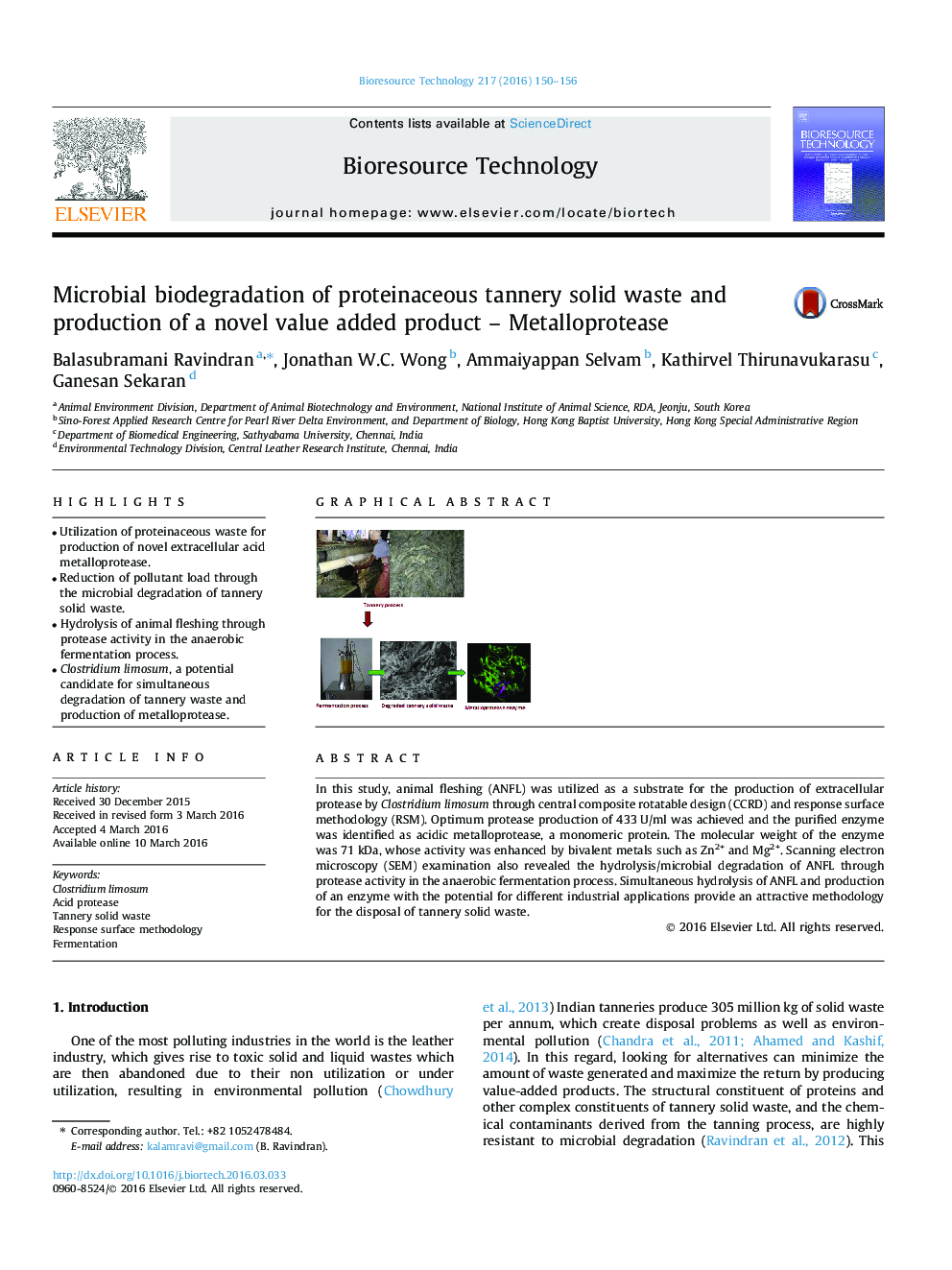| Article ID | Journal | Published Year | Pages | File Type |
|---|---|---|---|---|
| 679151 | Bioresource Technology | 2016 | 7 Pages |
•Utilization of proteinaceous waste for production of novel extracellular acid metalloprotease.•Reduction of pollutant load through the microbial degradation of tannery solid waste.•Hydrolysis of animal fleshing through protease activity in the anaerobic fermentation process.•Clostridium limosum, a potential candidate for simultaneous degradation of tannery waste and production of metalloprotease.
In this study, animal fleshing (ANFL) was utilized as a substrate for the production of extracellular protease by Clostridium limosum through central composite rotatable design (CCRD) and response surface methodology (RSM). Optimum protease production of 433 U/ml was achieved and the purified enzyme was identified as acidic metalloprotease, a monomeric protein. The molecular weight of the enzyme was 71 kDa, whose activity was enhanced by bivalent metals such as Zn2+ and Mg2+. Scanning electron microscopy (SEM) examination also revealed the hydrolysis/microbial degradation of ANFL through protease activity in the anaerobic fermentation process. Simultaneous hydrolysis of ANFL and production of an enzyme with the potential for different industrial applications provide an attractive methodology for the disposal of tannery solid waste.
Graphical abstractFigure optionsDownload full-size imageDownload as PowerPoint slide
